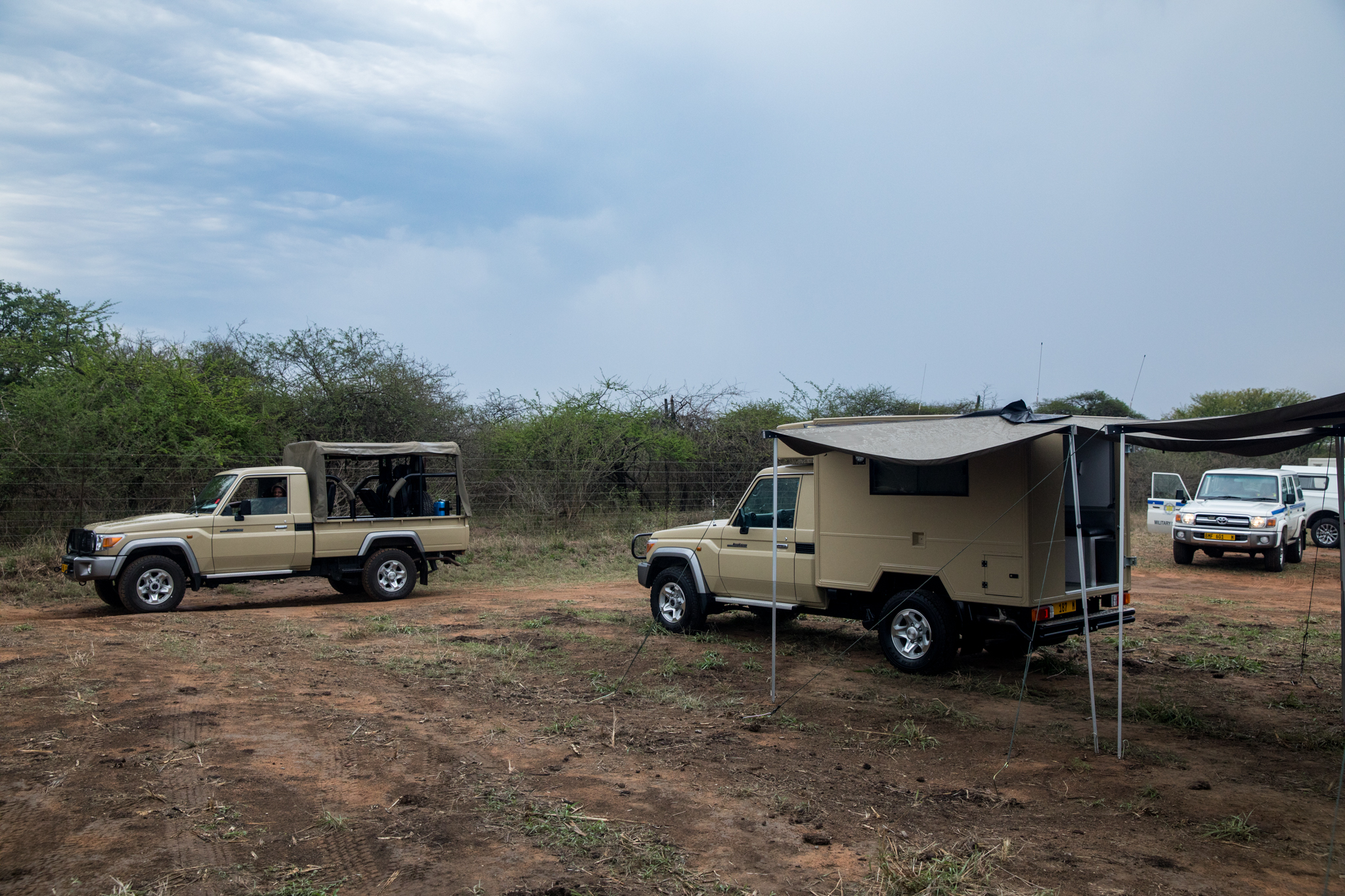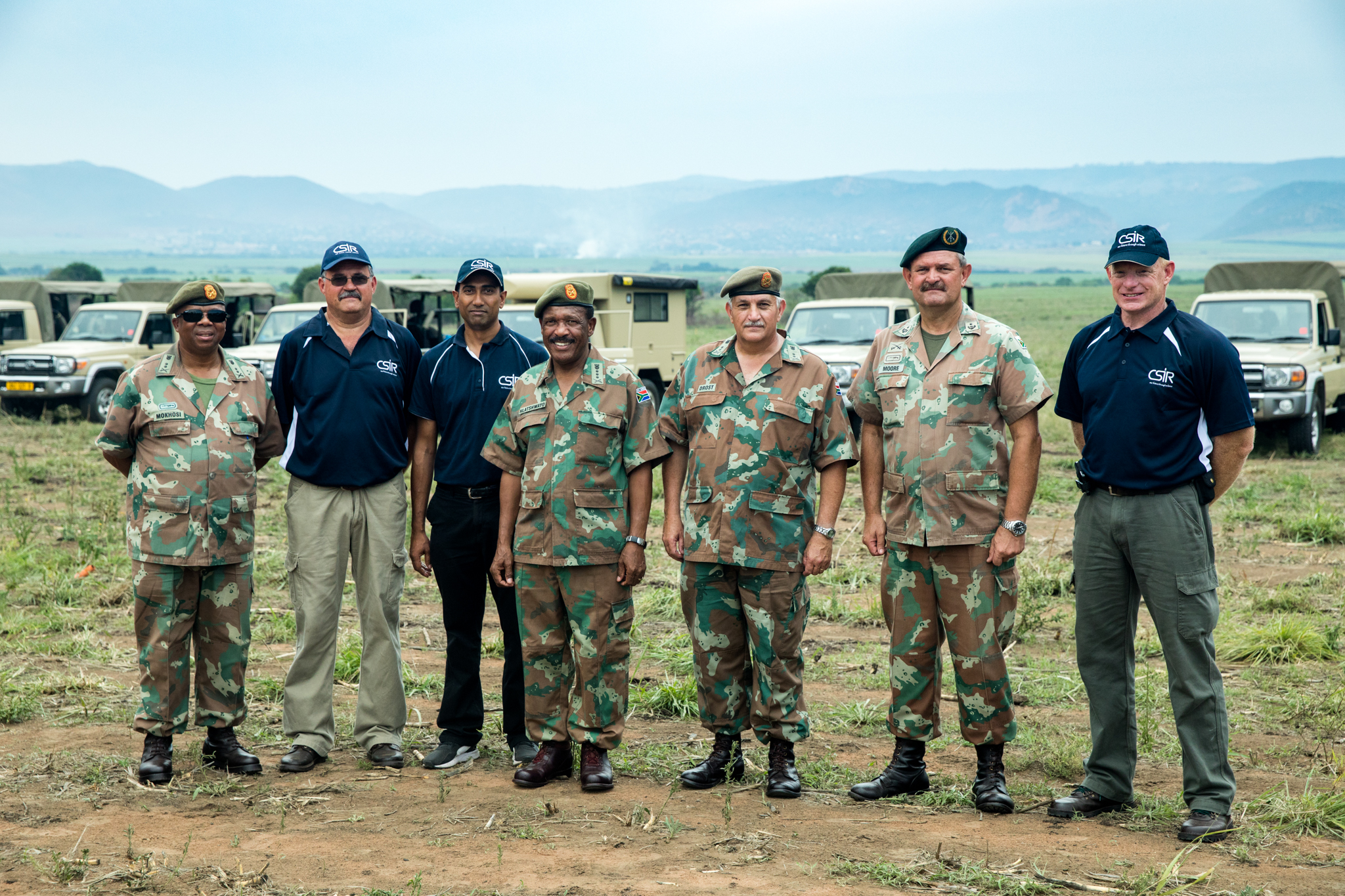SANDF launches new range of military vehicles to improve its border safeguarding capability
The South African National Defence Force recently launched a range of new military vehicles that will be used to patrol South Africa’s borders. The CSIR played a key role in determining which vehicles would be best suited for the job as well as how these can be modified to achieve maximum impact while also reducing the environmental impact caused by larger military type vehicles.

The South African National Defence Force recently launched a range of new military vehicles that will be used to patrol South Africa’s borders. The CSIR played a key role in determining which vehicles would be best suited for the job as well as how these can be modified to achieve maximum impact while also reducing the environmental impact caused by larger military type vehicles.

Lt Col Moore of the SANDF’s Joint Operations says several commercial vehicles, such as the Ford F250, Toyota, Mitsubishi, MB Sprinter, Isuzu, Colt and the Nissan were evaluated. “A value system was developed which looked at aspects such as cost-effectiveness, availability and ease of support, agility, ruggedness, as well as the ability to carry heavy loads. The Land Cruiser was chosen as the best vehicle for the job,” he says.
CSIR researcher Dave Roos says factory standard vehicles were modified to include different mobility packages. “Alterations included features such as the installation of roll-over safety frames, water tanks, diesel tanks with dispensing systems, and extra storage. Standard, commercially available vehicles were turned into field ambulances, mobile command and control stations, logistical modules and troop carriers,” says Roos.
The project started in 2011 and involved a comprehensive requirement study, development of concept demonstrators and evaluations of all systems. It included tests at the Gerotek vehicle test facility, end-user, operational field and original vehicle manufacturer evaluations, approval and certification. In the design process, the CSIR team worked closely with the original equipment manufacturer to ensure that all modifications were approved and qualified to ensure that vehicle warranties are not affected. After final approval, manufacturing data packs were developed and handed over to the SANDF for industrialisation and manufacturing.
The troop pack module can transport up to six soldiers, excluding the driver, and include reserve water and basic protection against the elements. The command and control module can accommodate four members on the move and incorporates features such as power management, radios and all general command post requirements. It also incorporates a rollover safety frame. The logistical module carries 120 L reserve water, 180 L reserve diesel with a dispensing system, extra spare wheels and has the capability to inflate tyres, do limited tactical recovery and transportation for all general logistical support requirements. The field ambulance can accommodate a driver, two medics and up to three patients, one laying and two sitting. Provision was also made to accommodate all first-line medical equipment and the power requirements to support these systems.
The launch took place in Pongola, a town close to the border beween South Africa and Swaziland. Lt Col Moore Moore says that by the second half of 2018, all 15 SANDF companies on Operation CORONA border protection duty will have received new vehicles.
“The fleet will consist of 29 vehicles per company, 18 of which will be troop carriers, four mobile command and control units, three logistic support vehicles and four ambulances. These vehicles will go a long way in empowering deployed SANDF soldiers,” concludes Lt Col Moore.



